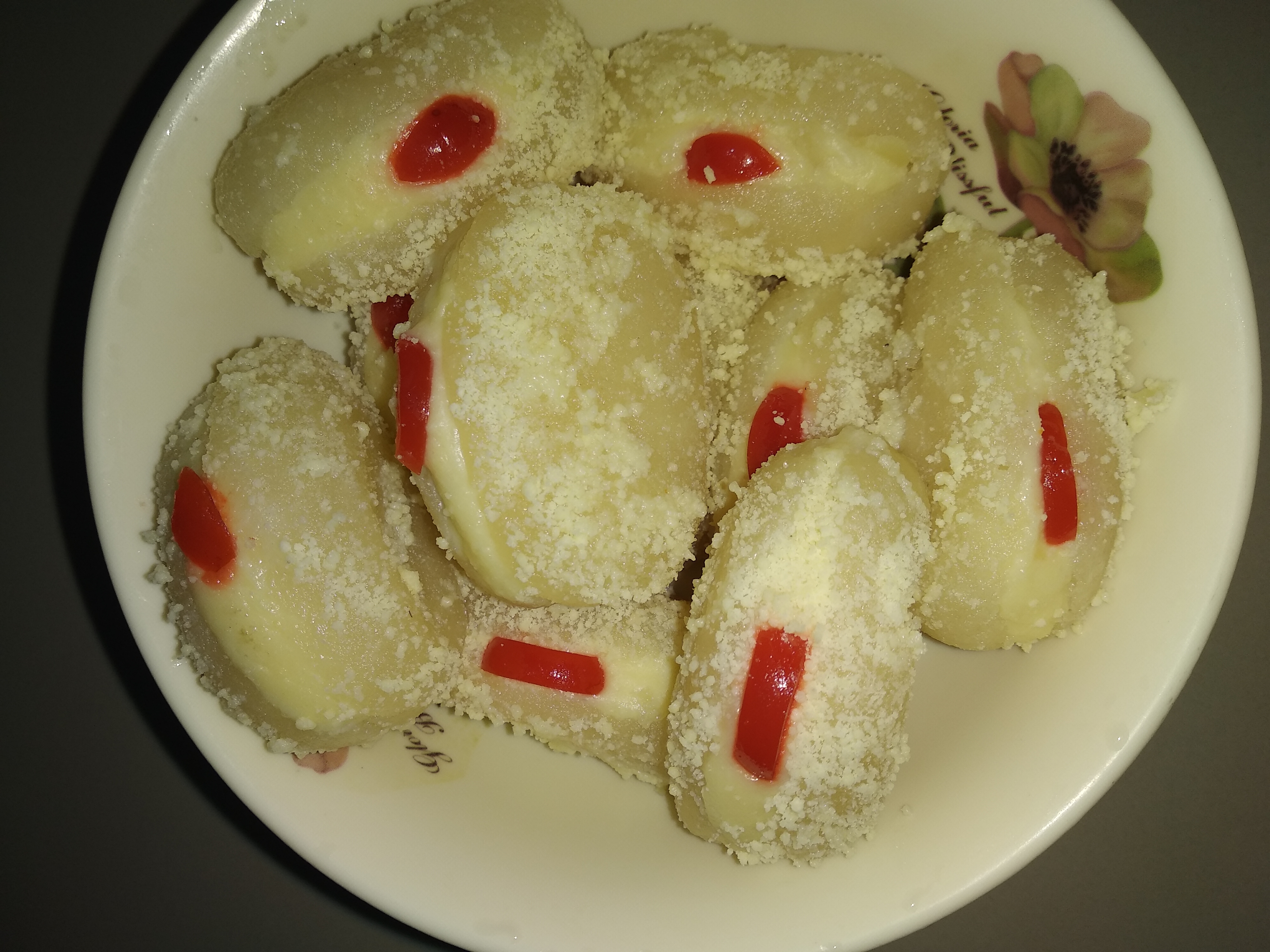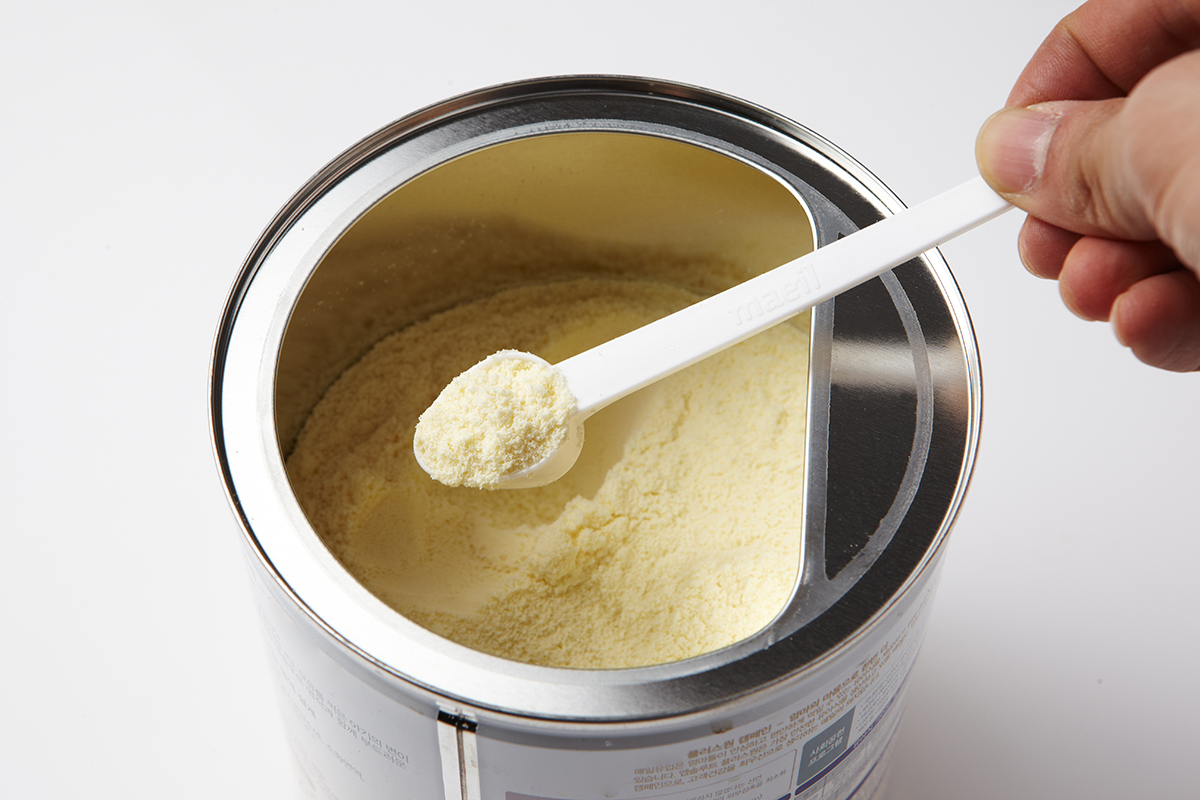|
Milk Solids
Powdered milk, also called milk powder, dried milk, or dry milk, is a manufactured dairy product made by evaporating milk to dryness. One purpose of drying milk is to preserve it; milk powder has a far longer shelf life than liquid milk and does not need to be refrigerated, due to its low moisture content. Another purpose is to reduce its bulk for the economy of transportation. Powdered milk and dairy products include such items as dry whole milk, nonfat (skimmed) dry milk, dry buttermilk, dry whey products and dry dairy blends. Many exported dairy products conform to standards laid out in ''Codex Alimentarius''. Powdered milk is used for food as an additive, for health (nutrition), and also in biotechnology (saturating agent). History and manufacture While Marco Polo wrote of Mongolian Tatar troops in the time of Kublai Khan who carried sun-dried skimmed milk as "a kind of paste", the first modern production process for dried milk was invented by the Russian doctor Os ... [...More Info...] [...Related Items...] OR: [Wikipedia] [Google] [Baidu] |
Spray Drying
Spray drying is a method of changing a dry powder from a liquid or slurry by rapidly drying with a hot gas. This is the preferred method of drying of many thermally-sensitive materials such as foods and pharmaceuticals, or materials which may require extremely consistent, fine particle size. Air is the heated drying medium; however, if the liquid is a flammable solvent such as ethanol or the product is oxygen-sensitive then nitrogen is used. All spray dryers use some type of atomizer or spray nozzle to disperse the liquid or slurry into a controlled drop size spray. The most common of these are rotary disk and single-fluid high pressure swirl nozzles. Atomizer wheels are known to provide broader particle size distribution, but both methods allow for consistent distribution of particle size. Alternatively, for some applications two-fluid or ultrasonic nozzles are used. Depending on the process requirements, drop sizes from 10 to 500 μm can be achieved with the appropriate c ... [...More Info...] [...Related Items...] OR: [Wikipedia] [Google] [Baidu] |
Nut Butter
A nut butter is a spreadable foodstuff made by grinding nuts into a paste. The result has a high fat content and can be spread like true butter, but is otherwise unrelated. Nut butters include: * Acorn butter * Almond butter * Cashew butter * Hazelnut butter * Macadamia nut butter * Peanut butter * Pecan butter * Pistachio butter * Walnut butter The almond, cashew, macadamia, peanut, pecan, pistachio and walnut are not true nuts in a botanical sense. However, because they are considered nuts in a culinary sense, their crushed spreads are called nut butters. Similar spreads can also be made from seeds not considered nuts in a culinary sense: * Pumpkin seed butter * Sesame seed butter (usually called tahini) * Soybean butter – made from soynuts (roasted soybeans) * Sunflower seed butter * Hummus or chickpea spread Nut and seed butters have a high content of protein, fiber, and essential fatty acids, and can be used to replace butter or margarine on bread or toast. Nu ... [...More Info...] [...Related Items...] OR: [Wikipedia] [Google] [Baidu] |
Cham Cham
Cham cham, Chomchom or chum chum ( bn, চমচম) is a traditional Bengali sweet, popular throughout the Indian subcontinent. The sweet comes in a variety of colors, mainly light pink, light yellow, and white. It is coated with coconut or mawa flakes as a garnish. History Chomchom Originated from Tangail District. Chamcham, an oval-shaped brownish variety of chomchom from Porabari in Tangail District of modern-day Bangladesh, dates back to mid-19th century. The unique taste has been attributed to the water in Porabari. Jagadish Mishtanno Bhandar in Khustia District makes a version known as ''Maowar Chomchom.'' Chomchom is a popular item in Pohela Boishak, the Bengali new year, and Durga Puja. See also * Rasgulla Rasgulla, also known as rasagola, rosogola or rosogolla, is a syrupy dessert popular in the Bengal region of the Indian subcontinent. It is made from ball-shaped dumplings of chhena and semolina dough, cooked in light sugar syrup made of suga ... * ... [...More Info...] [...Related Items...] OR: [Wikipedia] [Google] [Baidu] |
Caramel Candy
Caramel ( or ) is an orange-brown confectionery product made by heating a range of sugars. It can be used as a flavoring in puddings and desserts, as a filling in bonbons, or as a topping for ice cream and custard. The process of caramelization consists of heating sugar slowly to around . As the sugar heats, the molecules break down and re-form into compounds with a characteristic colour and flavour. A variety of candies, desserts, toppings, and confections are made with caramel: brittles, nougats, pralines, flan, crème brûlée, crème caramel, and caramel apples. Ice creams sometimes are flavored with or contain swirls of caramel. Etymology The English word comes from French ''caramel'', borrowed from Spanish ''caramelo'' (18th century), itself possibly from Portuguese ''caramelo''. Most likely that comes from Late Latin ''calamellus'' 'sugar cane', a diminutive of ''calamus'' 'reed, cane', itself from Greek κάλαμος. Less likely, it comes from a Medieval L ... [...More Info...] [...Related Items...] OR: [Wikipedia] [Google] [Baidu] |
Infant Formula
Infant formula, baby formula, or simply formula (American English); or baby milk, infant milk or first milk (British English), is a manufactured food designed and marketed for feeding to babies and infants under 12 months of age, usually prepared for bottle-feeding or cup-feeding from powder (mixed with water) or liquid (with or without additional water). The U.S. Federal Food, Drug, and Cosmetic Act (FFDCA) defines infant formula as "a food which purports to be or is represented for special dietary use solely as a food for infants by reason of its simulation of human milk or its suitability as a complete or partial substitute for human milk". Manufacturers state that the composition of infant formula is designed to be roughly based on a human mother's milk at approximately one to three months postpartum; however, there are significant differences in the nutrient content of these products. The most commonly used infant formulas contain purified cow's milk whey and casein as ... [...More Info...] [...Related Items...] OR: [Wikipedia] [Google] [Baidu] |
Milk Powder Incolac
Milk is a white liquid food produced by the mammary glands of mammals. It is the primary source of nutrition for young mammals (including breastfed human infants) before they are able to digest solid food. Immune factors and immune-modulating components in milk contribute to milk immunity. Early- lactation milk, which is called colostrum, contains antibodies that strengthen the immune system, and thus reduces the risk of many diseases. Milk contains many nutrients, including protein and lactose. As an agricultural product, dairy milk is collected from farm animals. In 2011, dairy farms produced around of milk from 260 million dairy cows. India is the world's largest producer of milk and the leading exporter of skimmed milk powder, but it exports few other milk products. Because there is an ever-increasing demand for dairy products within India, it could eventually become a net importer of dairy products. New Zealand, Germany and the Netherlands are the largest expor ... [...More Info...] [...Related Items...] OR: [Wikipedia] [Google] [Baidu] |
Bulk Density
Bulk density, also called apparent density or volumetric density, is a property of powders, granules, and other "divided" solids, especially used in reference to mineral components ( soil, gravel), chemical substances, ( pharmaceutical) ingredients, foodstuff, or any other masses of corpuscular or particulate matter (particles). Bulk density is defined as the mass of the many particles of the material divided by the total volume they occupy. The total volume includes particle volume, inter-particle void volume, and internal pore volume. Bulk density is not an intrinsic property of a material; it can change depending on how the material is handled. For example, a powder poured into a cylinder will have a particular bulk density; if the cylinder is disturbed, the powder particles will move and usually settle closer together, resulting in a higher bulk density. For this reason, the bulk density of powders is usually reported both as "freely settled" (or "poured" density) and ... [...More Info...] [...Related Items...] OR: [Wikipedia] [Google] [Baidu] |
Freeze Drying
Freeze drying, also known as lyophilization or cryodesiccation, is a low temperature dehydration process that involves freezing the product and lowering pressure, removing the ice by sublimation. This is in contrast to dehydration by most conventional methods that evaporate water using heat. Because of the low temperature used in processing, the rehydrated product retains much of its original qualities. When solid objects like strawberries are freeze dried the original shape of the product is maintained. If the product to be dried is a liquid, as often seen in pharmaceutical applications, the properties of the final product are optimized by the combination of excipients (i.e., inactive ingredients). Primary applications of freeze drying include biological (e.g., bacteria and yeasts), biomedical (e.g., surgical transplants), food processing (e.g., coffee) and preservation. History The Inca were freeze drying potatoes into chuño from the 13th century. The process involved mu ... [...More Info...] [...Related Items...] OR: [Wikipedia] [Google] [Baidu] |
Caramelization
Caramelization is a process of browning of sugar used extensively in cooking for the resulting sweet nutty flavor and brown color. The brown colors are produced by three groups of polymers: caramelans (C24H36O18), caramelens (C36H50O25), and caramelins (C125H188O80). As the process occurs, volatile chemicals such as diacetyl are released, producing the characteristic caramel flavor. Like the Maillard reaction, caramelization is a type of non-enzymatic browning. Unlike the Maillard reaction, caramelization is pyrolytic, as opposed to being a reaction with amino acids. When caramelization involves the disaccharide sucrose, it is broken down into the monosaccharides fructose and glucose. Process Caramelization is a complex, poorly understood process that produces hundreds of chemical products, and includes the following types of reactions: * equilibration of anomeric and ring forms * sucrose inversion to fructose and glucose * condensation reactions * intramolecular bondi ... [...More Info...] [...Related Items...] OR: [Wikipedia] [Google] [Baidu] |
Drum Drying
Drum drying is a method used for drying out liquids from raw materials with a drying drum. In the drum-drying process, pureed raw ingredients are dried at relatively low temperatures over rotating, high-capacity drums that produce sheets of drum-dried product. This product is milled to a finished flake or powder form. Modern drum drying techniques results in dried ingredients which reconstitute immediately and retain much of their original flavor, color and nutritional value. Some advantages of drum drying include the ability to dry viscous foods which cannot be easily dried with other methods. Drum dryers are easy to operate and maintain. Other products where drum drying can be used are, for example, starches, breakfast cereals, baby food, and instant mashed potatoes to make them cold-water-soluble. See also * Freeze-drying * Cryogenic Cooking In physics, cryogenics is the production and behaviour of materials at very low temperatures. The 13th IIR International Congress ... [...More Info...] [...Related Items...] OR: [Wikipedia] [Google] [Baidu] |




.jpg)

